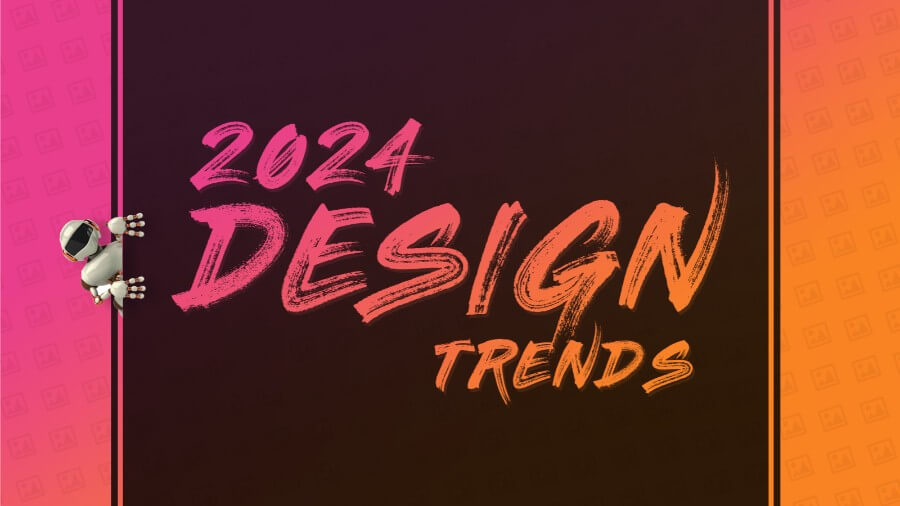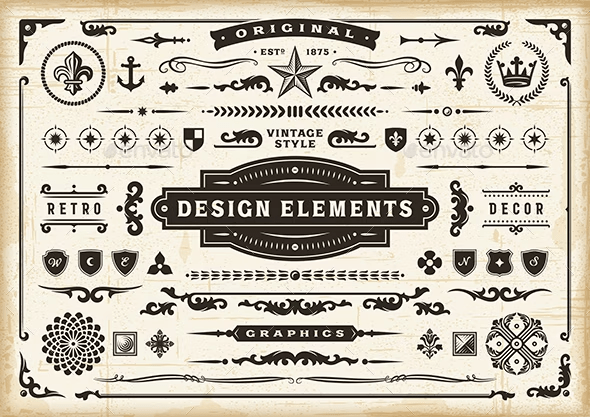
Nowadays, in a fight for attention, brands aspiring to make an impact that will be felt forever need to stay on current design trends and be one step ahead of the market. As the year of prediction is 2024, this knowledge requires us to be aware of those fashion styles that will prevail and affect consumers’ approval. The next year of 2024 is an exciting time for design and this article will highlight the major trends to follow. It will also reveal how brands can apply this matter to keep their competitive position and successfully attract their audience’s attention.
1. Sustainability-Inspired Design:
At the moment sustainable development has turned from a current fashion into an issue of the entire life. “In the year 2024, brands will spend more attention to the designs that are affected by sustainability, and going together with the needs of environment-conscious customers would be the trend. There will be a rise in the use of paper and materials that are recyclable and the utilization of biodegradable to reduce the effects of waste on the environment. The reduced packaging, as well as the embracing of minimalism, will become the norm. Nevertheless, I will point out “ecology-based” aspects, such as organic figures and nature-imitating colors. This shows resilience and the wish to reconnect with nature which will encourage us to sustain it” says, Gerrid Smith, Founder & CEO of Fortress Growth. The sustainability factor inclusion in the design process not only allows for the relation of the brand and its consumers’ values but also promotes the credibility and reliable image of the brand. In industries like jewelry, this shift is evident with the rise of Lab Grown Diamond rings, which offer an ethical and eco-friendly alternative without compromising on luxury. Brands can serve as model brands that conserve the environment and lead their industry as environmentally responsible leaders by using eco-friendly design guidelines for their business.
2. Augmented Reality (AR) Integration:
With technological progress, the application of augmented reality (AR) into the design will be a fast-paced evolution which is the virtue of technological breakthroughs in 2024. “Taking into consideration the growing popularity of augmented reality (AR) technology among brands, it is argued that brands will adopt this technology to create immersive scenarios that are considered to be perfect for connecting digital and physical environments. With augmented reality, customers will be innovatively interacting with their preferred brand. It could create awesome chances for engaging and personalizing. Through fashion e-commerce and retail sectors it can be used for showing the fabrics in the product and let the customers virtually try it on before they buy it. Implementing an AR element not only enriches the experience of the users but also provides brands access to important information and additional insights into customer behavior. Through the process of consumer interactions and engagement data analysis of the augmented reality environment, brands can further establish a more profound comprehension of their audience and this is what helps them in the process of metamorphosing their marketing campaigns in a way that they can cater to the audience’s and consumer’s preferences and requirements” shares, Mark McShane, Digital PR Agency Owner, Cupid PR
3. Bold and Vibrant Color Palettes:
Brands are expected to choose more loud and bright tones in the upcoming year, which will be a deviation from subdued colors that were popular in the past. According to Windy Ko, HARO links specialist at HARO Link Building, “The aim is to design a message that can effectively grab and maintain consumer interest. Styles of designs will be determined by color palette to become saturated, funky, and bright. These designs will serve as eye-catching sets with a wonderful visual appeal with a unique role. To prepare for the revival of color patterns that are associated with the nostalgic past and the adventurous use of neon and the bold range of vibrant colors, expect newfangled designs that are catchy and dramatic. The color choices ranging from bold to soft attract attention to themselves and further project the idea behind the individual interests of the brand. While they do this through the proper use of color, a brand can strengthen emotions and significance and thus change the experience of consumers and build engagement.”
4. 3D and Realism:
In the year 2024, it will be the leading factor in the revolution of the design processes to the ones that are realistic and interactive. “Impressive materiality, texture, and animation are mechanisms that brands will get to use to create 3D graphics that are very realistic and thus attract viewers and increase user engagement time. Blurring the lines between the applied and abstract worlds is an obvious thing. So, it is expected that you will see elevated attention to detail such as depth, perspective, and realism in the multiple design elements, including digital product representations and web design. The 3D design not only spices the product look but also provides opportunities for interactive and dynamic narration. Companies can create an emersion that allows users to live the story and make choices by utilizing 3D content. Thus, these narratives and experiences can grip their attention and stretch their imagination ultimately leading them to discover and connect with your history” adds, Tiffany Payne, Marketing Manager at iFlooded Restoration
5. Nostalgic Design Elements:

Brands persistently use the collective memory of people to bring back the forgotten feelings of warmth and familiarity. Hence, nostalgia will not be easy to be neglected as it will continue to have a big impact on the design trends in 2024. Jake Russell, Founder at Mercatus shares, “Authenticity and nostalgia will revive commercial identities and the brands of marketing campaigns via the use of retro typography, vintage pictograms, and nostalgic image designs which will experience the revival. Brands can build an emotional link with their audience by also expressing their brand through design which reminds of the past thus differentiating themselves from other competing offerings in the market. Along with engaging older groups, nostalgic design catches the attention of younger ones who care about authenticity and a legacy that lasts. Through nostalgia marketing, brands accomplish their objective of telling stories that will be meaningfully proven to be interactions and nurture a deep-seated passion within their customers.”
6. Fluid and Organic Shapes:
In 2024, there will be a revival of fluid curvy shapes in design that were murky before and contrast with the simplistic rigid geometrical shapes in the years gone by. For successful marketing campaigns that have high impact and attractive visuals, brands will embrace soft and rounded yet still fluent and flowing designs with irregular forms and shapes. “Selecting the organic forms for logos, packaging to digital interfaces, vital to imprint in customer, ‘s minds as kind, will certainly help us in ensuring that their brand experiences with Nimbus products are memorable and impactful. The animal’s forms will capture an understanding of the movement, vitality, and naturalness with which they are associated. Organic components not only create visual interest but they also imply the concept of unity which could be achieved through the distribution of the shapes throughout the artwork. Plants’ organic figures may construct a fundamental purpose of the design and lead people through the experience that immerses them.” asserts, Dalton Sheldon, CEO at Avalon Pontoons
7. Adaptive and Inclusive Design:
2024 given such a cause, many brands will take adaptive and all-inclusive decisions as a priority, resulting in the designs based on these principles. Apart from this, one of the trends is the building up of experiences that can be accessed by everybody even if they have disabilities or something that makes them restricted. According to Andy Fryer, Co-Founder of Easy Sign, “Web interfaces may tend to increasingly focus on usability, readability, and easier navigation as users are exploring options of voice, haptic, and gesture interfaces that allow the introduction of some novel solutions to varying specific user needs. It is believed that these technologies would be capable of being successfully used soon. Adaptive design not only allows for making the website more navigable but also makes it much easier to use and much more user-friendly as well. Those customers who are introduced to design activities that are universal in nature, demand products and services that are equally viable to anyone. This results in their engagement with customers and customer satisfaction too.”
8. Hybrid Design Styles:
As the industry boundaries become more blurred, different design styles will emerge and fusion styles will become the main trend art in 2024. “In the future, companies are going to design by blending different components from different design disciplines, mixing traditional and digital forms of manufacturing, combining analog and digital mediums, and fusing cultures from the entire world. The exceptional is about the addition of styles, visuals, and concepts that are expressions of the varied presence of the world. The brand experiences, this way developed, will be of a kind one and won’t be easily forgotten. This will be due to their ability to move the audiences of all the countries and cultures. The hybrid designs, for one, would have some scope for creativity and inventiveness while, at the same time, flouting some existing design norms. Hybrid design is an answer that brands can apply in developing an exclusive and collectible brand identity that can position itself as a differentiator in an overcrowded market and bring value to the customers” says, Timothy Allen, Director at Oberheiden P.C.. Adding a touch of luxury and precision to these designs, Tissot watches, Nike or Porsche’s design could serve as an inspiration for brands to integrate timeless elegance with modern trends, ensuring they stand out in the competitive landscape.
Conclusion:
As we move further into the year 2024, design will continue to experience innovative exponential growth and development in the future years. Brands will stay competitive if they keep their design strategy current, intriguing, and foreshadowing. This will be achieved if brands embrace market research, innovation experimentation, and out-of-the-box thinking. In conclusion, it could be retro, sustainability or augmented reality elements, or just a nostalgic ethic; the core thing is to code the change and to utilize trends in design to make consumers’ romantic, sensible, and advantageous impressions of them, that would result in them shopping with the brand again.